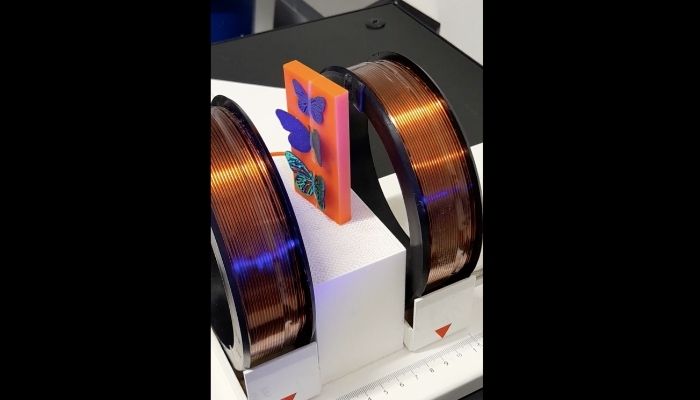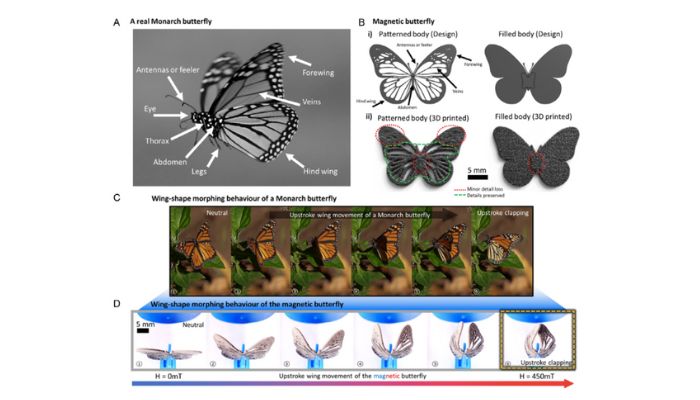Magnet-Activated 3D Printed Wings Replicate Monarch Butterfly Flight

Researchers at the Technical University of Darmstadt and the Helmholtz Center Dresden-Rossendorf have developed robotic wings inspired by the structure and flight dynamics of the monarch butterfly. Using 3D printing, they created wings that operate without batteries and with a passive bending system to generate efficient motion. According to the researchers, some of the applications for these flexible robots include environmental research, search and rescue operations and medical applications.
The wings of real butterflies have great strength and flight efficiency. Monarch butterflies, which inspired this research, travel thousands of miles each year between Mexico and Canada, demonstrating great energetic and mechanical efficiency. This motivated the researchers to take these characteristics, using a 3D printed replica of the wing structure, and integrate them into a new robotic device. The flapping of the 3D robotic wings is activated when they are exposed to a magnetic field because they are printed with a thermoplastic polyurethane composite and microscopic magnetic particles.

The fluttering of the 3D robotic butterflies is activated when exposed to a magnetic field (Credits: screenshot of the demonstration video, Technical University of Darmstadt).
The team, led by Professor Oliver Gutfleisch and Dr. Denys Makarov, fabricated twelve wing models. Although different structures were replicated, the ones that showed the best results were the venous structures inspired by monarch butterflies. Through finite element analysis simulations and experimentation, the researchers evaluated the influence of these patterns on the aerodynamics and maneuverability of the wings. The results, published in Advanced Intelligent Systems, indicate that designs with veined structures improve material strength and adaptability without compromising flexibility. To replicate such a design, the models were printed using laser powder bed fusion (L-PBF).
What Are the Applications of 3D Printed Wings?
The development of these robotic wings opens up new possibilities in different sectors. In the environmental field, they could monitor ecosystems and study pollinator populations. In search and rescue missions, their light and efficient design would allow exploration of areas that are difficult to access after natural disasters. Furthermore, in the biomedical field, this technology could be applied in minimally invasive surgeries or used for artificial muscle and intelligent materials development, giving these materials shape-changing capabilities.
One of the current challenges is that an external magnetic field is needed to drive the wings. According to Muhammad Bilal Khan, co-author of the study, “Future work could focus on integrating more miniaturized magnetic field generators with feedback control for autonomous operation.” New strategies will also be investigated to optimize movement control and precision, by varying the strength and direction of the magnetic field.

The wing structure of the monarch butterfly was replicated thanks to laser melting by powder bed (Credits: Technical University of Darmstadt)
The development of these robotic wings represents a breakthrough in bio-inspired robotics. At the same time, 3D printing shows its potential for creating functional devices that mimic the efficiency and adaptability of biological systems. With future improvements, this technology could revolutionize diverse sectors, from environmental scanning to precision medicine. You can learn more about the research here.
What do you think of the 3D printed wings? Let us know in a comment below or on our LinkedIn, Facebook, and Twitter pages! Don’t forget to sign up for our free weekly Newsletter here, the latest 3D printing news straight to your inbox! You can also find all our videos on our YouTube channel.
*Cover Photo Credit: Technical University of Darmstadt






